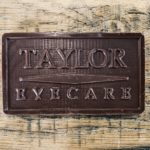By Clint Taylor, OD

March 24, 2021
When I first started my optometry practice, I used to think about what level the practice needed to reach before we would be considered a “success.” In time, however, I have come to realize that truly successful businesses never reach what they would consider to be the apex. They never get to a point where they sit back, prop their feet up and say, “We made it!” Instead, they aim for constant, consistent improvement. Success shouldn’t be thought of as a level that can be reached. Rather, true success is the continued refinement of processes and perpetual improvement in all areas.
Our emphasis on continuous improvement has a resulted in a practice with a strong rate of return patients and many friends and family referrals. In 2020, 82 percent of the patients we saw had previously visited our practice. Of the 18 percent who were new, I would estimate that 90 percent were from word-of-mouth referrals.
Here are three areas in which we hope to show continued improvement in our practice.
Patient Experience: Unique Touches that Make Them Remember Us
In the eyecare space, patients are customers and customers have choices. Most patients, especially those living in urban areas, have numerous eyecare facilities to choose from. And advances in technology in all businesses have made patients and customers more demanding. They’re used to getting products faster, cheaper and easier, and they expect no less from their eyecare provider.
To differentiate our practice, and to compete and win against the big-box retailers and online competitors, we continually look for new ways to improve the patient experience. The patient experience begins before the patient even walks in our door. From our social media presence, to the way our staff answers the phone, to the music that is playing in our office, all interactions the patient has with anything related to our office make up the patient experience. We are constantly refining and tweaking these processes, which hopefully result in positive patient experiences.

The chocolate business cards Dr. Taylor and his staff give to patients so they can’t help but remember the practice that delivered exceptional care.
For example, we give out chocolate business cards to our patients. Years ago, we gave out a piece of nice chocolate with every new glasses purchase. This was a way for us to thank our patients for their business, and it made a positive contribution toward their experience at our office. Then we found a local baker who could make little wrapped sunglasses out of chocolate, so we started giving those out instead. Eventually, we started having the baker make little wrapped chocolate business cards with our logo on them. And we have continued to fine tune that process, recently switching from milk chocolate to dark chocolate. This is one example of continued improvement – finding an idea, implementing it and then continuing to fine tune and improve it.
Staff Development: Opening Opportunities for Advancement
Continued improvement in staff development can be thought of in two ways. First, we want our staff to always be growing as a whole. We want our team to grow their overall knowledge, ability to communicate with each other and with patients, and skill set. Staff working together can be thought of as one single machine – and we want our machine to be as productive and efficient as possible. Or, thought of another way, our staff is analogous to a sports team – and we want our team to win as much as possible.
But we also want our staff members to grow and develop individually. We always want each staff member to know there is opportunity for professional advancement, and we want to help give them the knowledge and skills to get to the next level. Our lead technician is a great example of this. She started at our office several years ago as a receptionist. She excelled in this role, but she expressed interest in doing more, so she moved into the role of technician/optician. She eventually earned para-optometric certification, and now she is our lead technician, responsible for hiring new technicians and for providing ongoing training for our entire team of technicians.
Other Articles to Explore
These goals for continued staff improvement – both as a whole and individually – can be achieved through training and communication. We encourage all of our staff members to get certified, and we happily pay for study materials and testing fees. We also have in-house training sessions and even ‘“field trips” to our lab or other training sites. And we encourage, and pay for, key staff members to attend the Illinois Optometric Association and American Optometric Association conventions when possible.
We offer frequent feedback in our communications with staff, as we have found it is key for staff development. We strive for transparency and consistency when communicating with staff.
Product Portfolio: Experience New Products Yourself Before Prescribing Them to Patients
A third area of our practice in which we hope to continue to improve is our product offering. Ophthalmic products have improved immensely in the last decade, and new products continue to be rolled out. Examples are abundant: new anti-reflective treatments are much harder to scratch than their predecessors, new progressive designs enable patients to adapt to their new lenses much easier, new contact lens materials allow more oxygen transmission, and the list goes on.
To provide our patients with the best products, we have to learn which products are the best. Frame, lab and contact lens reps can be a great source of information on new products, and when they visit our office to tell us about a new product, we listen. But there is no substitute for trying a product yourself. When a new progressive design, contact lens or AR treatment comes out, my staff and I try them. Not only does this enable us to see a product’s benefits for ourselves, but it enables us to tell patients that we have first-hand knowledge about the product because we use it ourselves.
As innovation and technology lead to new and better products, we should continually improve our product offerings. We shouldn’t let our patients find out about new products from our competition – they should hear about them from us.
In “Some Assembly Required: Seeing Your Practice Through Your Patients’ Eyes,” Gale Stoner writes, “There is no such thing as maintaining market share. You are either gaining or declining.” The idea of reaching a certain level and then maintaining that level by coasting is a myth. By looking for ways to constantly and continuously improve in all facets of your practice, you can set yourself up for long-term growth and true success.
 Clint Taylor, OD, is the owner of Taylor Eye Care in Carmi, Ill., a one-OD, one-location practice with nine support-staff members that delivered about 3,000 comprehensive eye exams in 2019. To contact him: doctor@tayloreyecare.com
Clint Taylor, OD, is the owner of Taylor Eye Care in Carmi, Ill., a one-OD, one-location practice with nine support-staff members that delivered about 3,000 comprehensive eye exams in 2019. To contact him: doctor@tayloreyecare.com

























